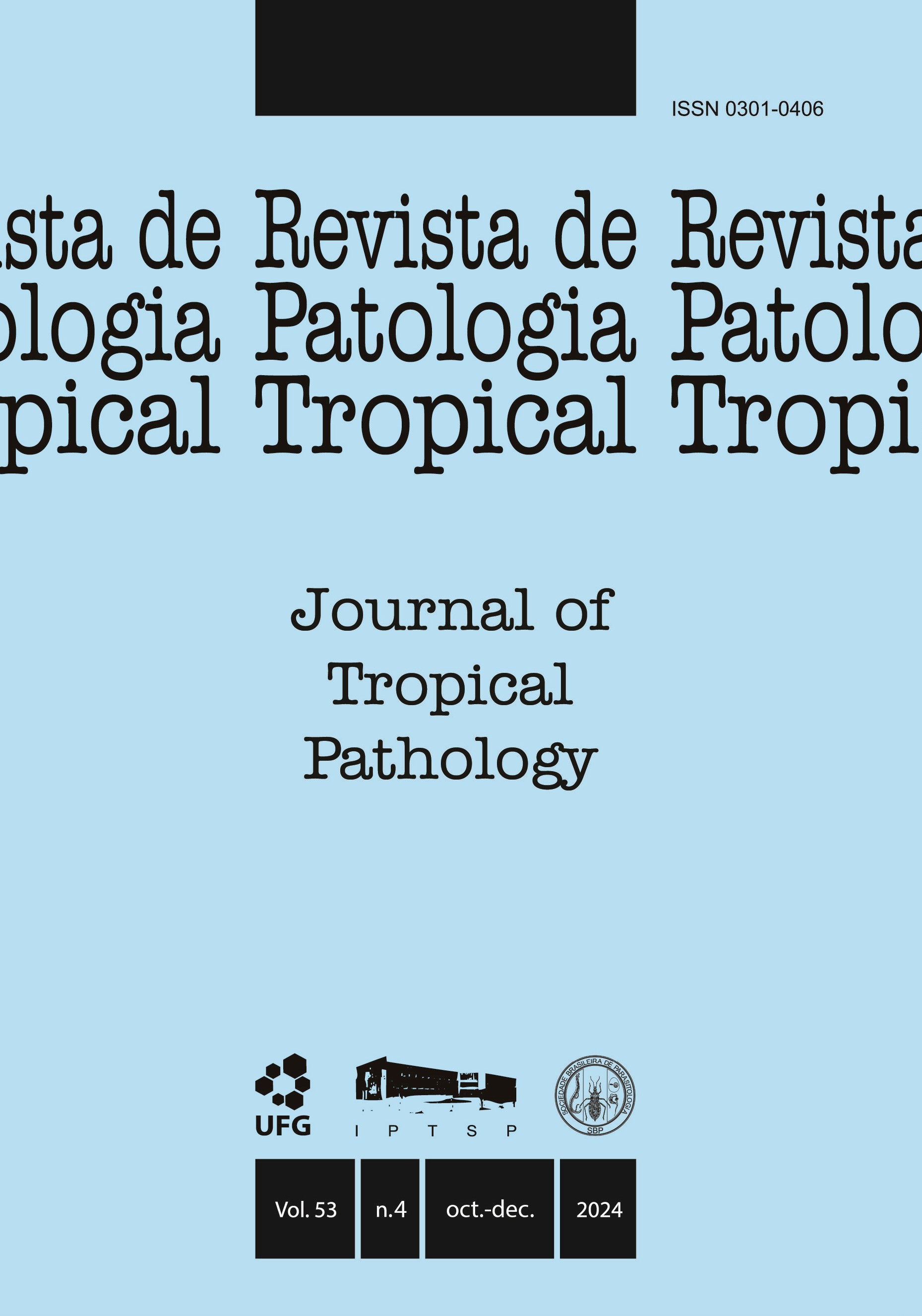Presence of Cryptosporidium spp. in children and pet dogs in two periurban areas in northeastern Argentina
DOI:
https://doi.org/10.5216/rpt.v53i4.79323Resumo
Cryptosporidium is an intracellular coccidian parasite that has been found to infect both humans and wild, domestic and companion animals. This study aimed to examine the presence of Cryptosporidium spp. in children and their pet dogs in two periurban neighborhoods in Corrientes City (Argentina). We also evaluated the characteristics of humans, socio-environmental features, and hygiene practices associated with the presence of this protozoan. Socio-environmental variables and hygiene practices of children were evaluated through semi-structured questionnaires which were answered by every family. Samples were concentrated by sedimentation-flotation technique and stained by modified Ziehl-Neelsen technique. To data analysis, Fisher’s exact test and Multiple Correspondence Analysis were used. In total, stool samples of 88 children and 69 pet dogs of 57 households were analyzed. The study showed that 5.6% of children and 11,5% dogs were parasitized. Simultaneous infection in children and their pet dogs in two household was detected. No statistically significant association were found between socio-environmental, hygiene practices, demographic variables and the presence of Cryptosporidium spp. In conclusion, based on our results, the presence of this protozoan is reported in children and their pets, highlighting the need to implement molecular studies to determine the circulating species in the study area and the importance of adopting a One Health approach, because fragmented studies do not allow for a complete understanding of the parasite-host-environment system.
KEY WORDS: Cryptosporidium spp.; children and pet dogs; households; Argentina.
Downloads
Downloads
Publicado
Como Citar
Edição
Seção
Licença
The manuscript submission must be accompanied by a letter signed by all authors stating their full name and email address, confirming that the manuscript or part of it has not been published or is under consideration for publication elsewhere, and agreeing to transfer copyright in all media and formats for Journal of Tropical Pathology.

